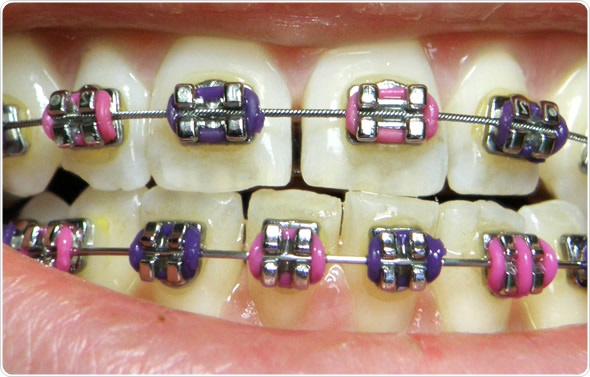Why Cumming Invisalign is the Perfect Option for a Discreet Orthodontic Option
Why Cumming Invisalign is the Perfect Option for a Discreet Orthodontic Option
Blog Article
Comprehensive Guide to Orthodontics Treatments for Fixing Oral Imbalances
Recognizing the details of each procedure, including their devices, advantages, and potential downsides, is critical in making notified decisions concerning one's orthodontic therapy. As we browse via the extensive guide to orthodontic treatments for correcting dental imbalances, the complex details of each method will certainly unfold, dropping light on the course toward a useful and unified oral alignment.
Orthodontic Procedures Review

In addition to clear aligners and traditional braces, orthodontists might additionally advise other treatments like headgear, palatal expanders, or retainers to deal with specific positioning problems (orthodontics). These treatments are tailored to every patient's one-of-a-kind needs and might include a mix of treatments to accomplish the desired outcomes. Regular changes and surveillance are essential parts of orthodontic treatment to guarantee progress gets on track and to make any essential modifications along the road. By going through orthodontic procedures, clients can not only achieve a straighter grin but also enhance their general oral health and function.
Standard Dental Braces: Exactly How They Work
When thinking about orthodontic treatments for oral misalignments, typical braces stand out as a reliable approach for fixing teeth placing. Conventional dental braces consist of braces, wires, and bands that collaborate to use continuous stress on the teeth, gradually moving them right into the desired placement. The brackets are affixed to the teeth using an unique adhesive, and the wires are threaded with the braces. By changing the stress of the wires, orthodontists can manage the instructions and force put on each tooth, guiding them into correct alignment with time.
As stress is applied to the teeth with the dental braces, the bone surrounding the teeth is reshaped to sustain the new tooth positions. People will certainly need normal modifications at the orthodontist's office to ensure the braces proceed to apply the right stress for efficient teeth activity.
Invisible Aligners: Benefits And Drawbacks
Undetectable aligners use a very discreet and practical alternative to standard dental braces for dealing with dental misalignments. These clear, customized trays are essentially undetectable when worn, making them an attractive alternative for people seeking a more cosmetically pleasing orthodontic treatment. One of the primary advantages of unnoticeable aligners is their removability, enabling easier maintenance of oral health contrasted to standard dental braces. Clients can eliminate the aligners prior to eating or cleaning their teeth, reducing the threat of food obtaining embeded the appliance and simplifying the cleansing procedure.

Surgical Orthodontic Options
Surgical treatments in orthodontics existing feasible choices for attending to intricate oral imbalances that may not be properly fixed through traditional orthodontic therapies. While unnoticeable aligners and traditional dental braces can fix numerous orthodontic issues, certain instances require medical intervention to attain optimum outcomes. Surgical orthodontic alternatives are usually suggested for severe malocclusions, considerable jaw inconsistencies, and cases where the underlying bone framework needs adjustment to achieve appropriate alignment.
One common medical orthodontic procedure is orthognathic surgical treatment, which includes rearranging the jaws to fix useful concerns such as trouble speaking or chewing. This surgery is frequently performed in cooperation with an orthodontist who aids align the teeth before and dentist lookup after the treatment. Surgical orthodontics might likewise involve procedures to subject affected teeth, remove excess gum tissue, or reshape the jawbone to create an extra unified face account.
Prior to thinking about medical orthodontic choices, people go through a comprehensive examination to identify the requirement and prospective benefits of such interventions. cumming aligners. While surgical treatment might seem difficult, it can substantially enhance both the function and aesthetic appeals of the smile in cases where conventional orthodontic therapies drop short
Retainers and Post-Treatment Care

Failure to abide with post-treatment treatment instructions can result in relapse, where the teeth slowly move back in the direction of their original positions. Constant retainer wear, good dental health, and normal oral examinations are vital for maintaining the outcomes accomplished with orthodontic surgery and ensuring the lasting security of the fixed oral positioning.
Final Thought
In final thought, orthodontic treatments provide numerous choices for dealing with dental imbalances. Surgical orthodontic choices are readily available for much more severe misalignments. On the whole, orthodontic procedures can successfully boost dental health and wellness and visual appearance.
As we browse via the comprehensive guide to orthodontic treatments for correcting dental misalignments, the detailed details of each method will certainly unravel, shedding light on the path toward a functional and harmonious oral placement. - orthodontics
One of the most typical orthodontic therapies is the usage of braces, which consist find more of metal brackets and cables that apply mild stress to progressively change teeth into the desired position.When thinking about orthodontic therapies for oral imbalances, typical dental braces stand out as a time-tested technique for remedying teeth placing. Furthermore, undetectable aligners might straight from the source not be ideal for intricate orthodontic concerns that call for even more substantial teeth activity, as they are typically recommended for mild to moderate cases. Retainers are custom-made orthodontic devices designed to hold teeth in their corrected settings after the conclusion of orthodontic therapy.
Report this page